Browse our comprehensive product guides and documentation

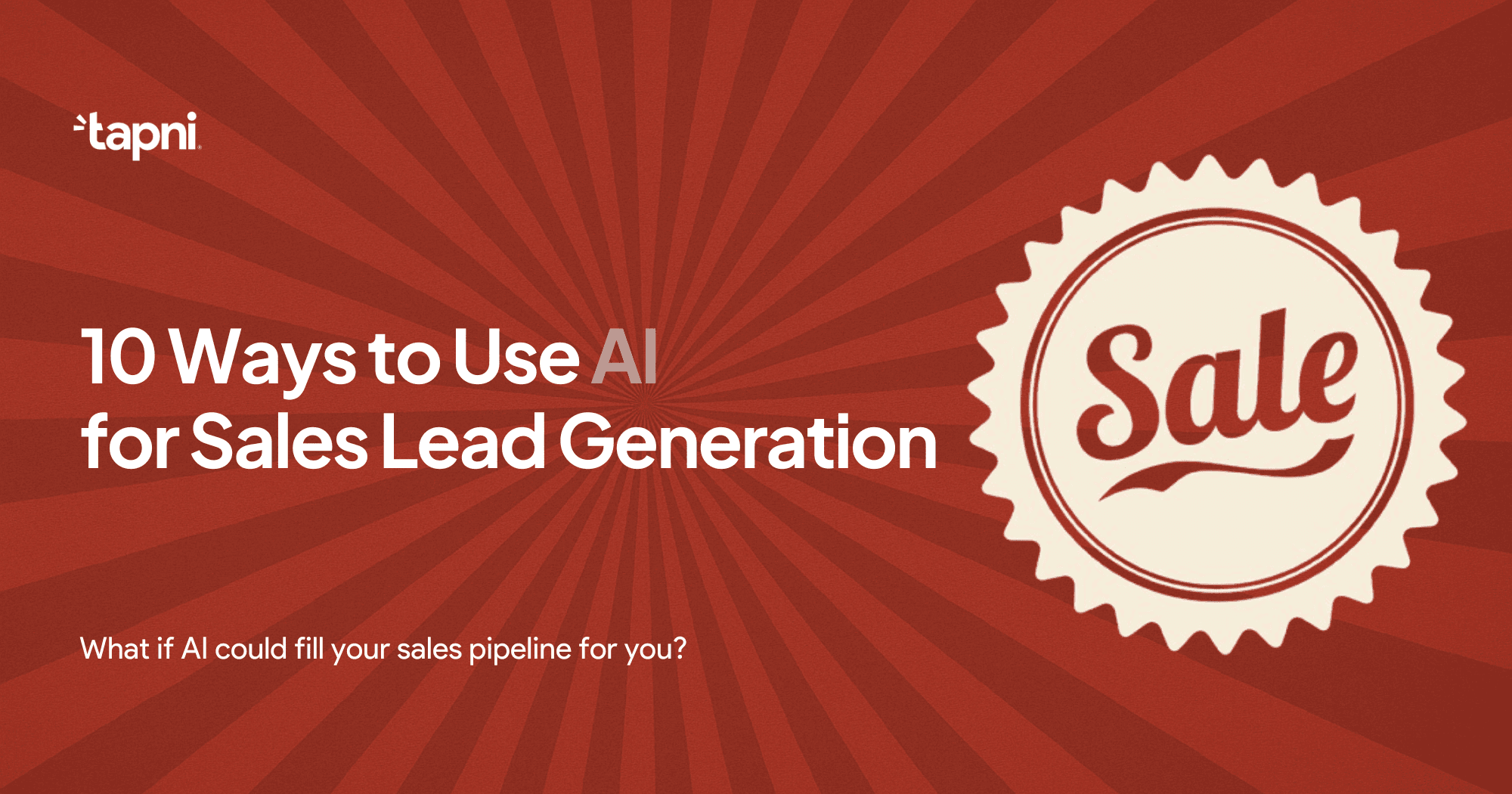
What if AI could fill your sales pipeline for you?
Well, in 2025—it absolutely can.
AI is revolutionizing the way sales teams manage routine tasks and carry out outreach campaigns. According to a report by Invesp, companies leveraging AI for lead generation witnessed a 50 %+ increase in sales-ready leads and a 33% reduction in operational costs.
From forecasting market trends and automating lead nurturing to tailoring outreach strategies, AI tools significantly cut down on manual efforts. So whether you are a startup owner or running an enterprise, integrating AI into your lead generation process can shake things up for the better.
In this blog, we will explore 10 ways to use AI for sales lead generation in 2025. Let’s dive in!
Before discussing the different ways to leverage AI in lead generation, let's understand the importance of AI in sales lead generation in 2025.
Traditional ways like networking events, referrals, and surveys often fail to actively engage today’s prospects. Today, the audience expects instant responses and a shorter sales cycle, expectations that AI can efficiently meet.m
The primary purpose of AI is to automate workflows and allow sales reps to focus on more strategic, high-impact tasks. Automation is crucial for:
Building an ICP requires robust data collection, and AI excels at this by analyzing behavior patterns and defining customer goals using ML.
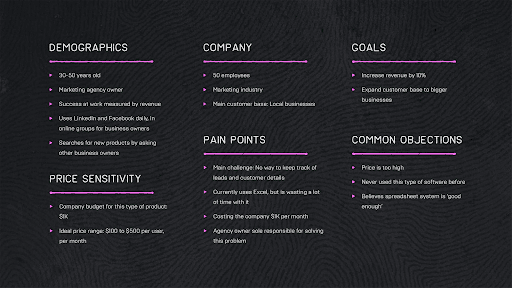
Image source: https://www.close.com/blog/ideal-customer-profile.
AI collects data from these key sources:
Personalization significantly boosts engagement—65% of marketers report higher open rates through personalized outreach. AI-driven personalization works wonders when we talk about lead generation, it leverages prospect data to deliver tailored messages in bulk. The key aspects include:
Here’s an example of an AI-powered personalized outreach template:

Image source: https://dripify.io/features/hyper-personalized-outreach/.
AI-powered predictive analytics helps prioritize leads based on user behavior. This allows sales reps to anticipate prospect actions and their likelihood of converting. It has two crucial roles in lead gen:
Expert sales reps use advanced AI algorithms in 2025 to streamline workflows and maximize lead generation. Let’s discuss the 10 ways to use AI for lead generation:
AI utilizes sophisticated ML algorithms to score sales leads based on insights from real-time user actions and responses.
Effective lead scoring enables sales teams to focus on prospects who have a high chance of conversion. This is further divided into two groups:
These are prospects who show interest by engaging with your brand’s content, downloading resources, and completing surveys. AI monitors these actions to update the marketing team for further nurturing, making them ready for purchases.
These prospects show a clear intent to purchase by requesting a demo presentation, discussing premium packages, and trying free product trials. AI tracks the engagement pattern to segment these prospects as SQLs for making a successful sale.
There are three key components of AI-driven lead scoring:
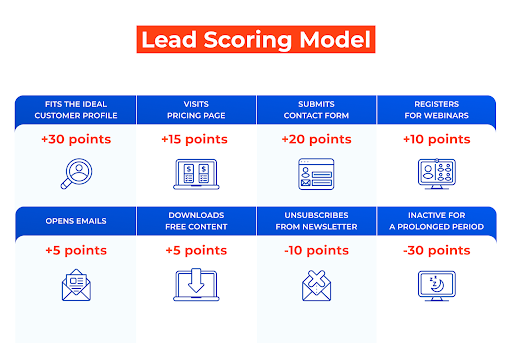
Image source: https://www.creatio.com/glossary/lead-scoring.
Scoring model:
Predictive lead analytics uses ML and statistical modeling to forecast the likelihood of conversions. This analysis is based on transaction history, customer behavior, and CRM records.
The main aspects of predictive lead analytics include:
Amazon uses predictive analysis to offer anticipatory shipping. AI identifies popular items and Amazon ships them to nearby warehouses for faster access. So, now whenever you order a popular product from Amazon, it will be shipped to you on the same day.

Image source: https://anticipatoryshipping.blogspot.com/p/blog-page.html.
AI-powered chatbots enhance lead qualification by offering 24/7 chat support. As prospects interact with the chatbot, AI algorithms collect user data and evaluate it against your Ideal Customer Profile (ICP) to score and segment leads effectively. Let’s discuss the role of chatbots in lead qualification:

Image source: https://www.thinkstack.ai/blog/how-do-chatbots-qualify-leads/.
“Hi there! Are you ready to explore our solutions?”
The combination of real-time engagement and questioning ensures that the prospect aligns with your ICP.
For example, in eCommerce, the combination of real-time engagement, adaptive questioning, and agentic personalization ensures shoppers are guided through personalized journeys that match your ideal customer profile.
Intercom’s lead qualification chatbot, for instance, increases qualified leads by 73%. The chatbot greets a visitor with a simple question—“Are you an Intercom customer?” with two choices:
The chatbot guides the visitor through the next steps based on the response. This makes the experience more personal and replaces sales executives in the initial funnel stage.
AI-powered hyper-personalization increases email open rates by 50%. The role of AI in hyper-personalization is:
For example, JP Morgan partnered with Persado to improve personalization in their Ad copies, leading to a 450% increase in CTR.
Intent signals are behavioral indicators that determine a buyer’s intent based on actions like researching solutions, reading product reviews, and exploring a specific category.
There are five types of intent signals that AI tracks:
By leveraging AI-led intent data, Account-Based Marketing (ABM) teams can prioritize high-potential accounts, enabling more targeted and effective outreach.
Moreover, intent signals enhance lead scoring by assigning accurate scores to prospects with high intent signals. 93% of marketers say intent data helps them convert high-quality leads faster than normal leads.
AI-powered tools collect intent data from multiple sources to allocate resources efficiently, saving time spent on low-intent leads.
AI has improved data enrichment by enabling companies to integrate first-party data, real-time updates, and data-driven insights into their CRM systems. Data enrichment is extremely time-consuming if done manually, but AI rapidly scans many channels to detect gaps and correct data errors.
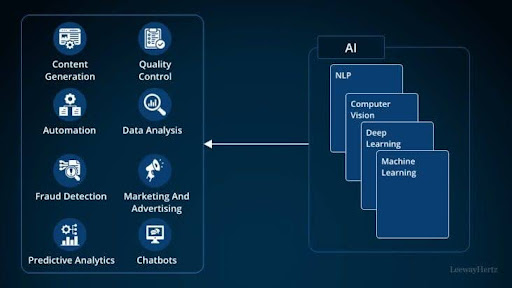
Image source: https://enricher.io/blog/ai-for-data-enrichment.
Here’s the role of AI in CRM data enrichment:
Real-time updates prevent human intervention and minimize manual errors, improving the accuracy of CRM databases.
This refines and reorganizes the data to prevent confusion among sales teams and enhance lead scoring accuracy.
This enables businesses to proactively address customer needs, tailor marketing efforts, and optimize sales strategies.
Social media prospecting with AI leverages ML and deep learning to locate the right people who are interested in your product and establish connections with them. Marketers can recognize behavioral patterns and make live adjustments in outreach campaigns.
Here’s how you can use AI-driven social media prospecting:
Voice AI is transforming how businesses engage with prospects by using natural language processing (NLP), machine learning, and voice synthesis to mimic human conversations. Many global companies now rely on advanced AI tools—such as spanish text to speech generators—to create lifelike voices in multiple languages. This not only personalizes outreach but also helps scale it across diverse markets.
The key aspects include:
Lookalike audiences are audiences who share similar characteristics with your existing customers. With AI, you can spot these audiences and serve ads accurately to generate high-quality leads.
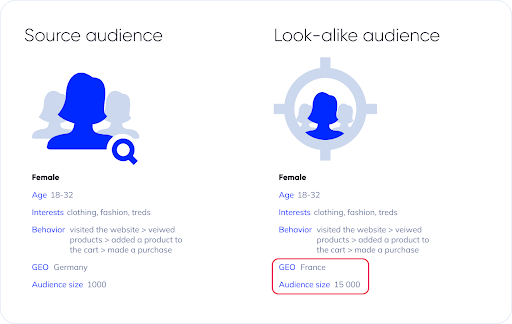
Image source: https://nt.technology/en/blog-en/everything-you-need-to-know-about-look-alike-targeting/.
Here’s how it works:
Meta is a prime example of building lookalike audiences for smart ad targeting. For example, if you run a clothing brand, you can build a lookalike audience using the data of your pre-existing customers. Now, if you set your lookalike audience to size two, then Meta shows your ads to the top 2% of target users in your country.
Lead nurturing is the process of addressing prospects at every funnel stage by providing them the required information, acknowledging their concerns, and demonstrating your expertise. The key features of AI-driven lead nurturing are:
Additionally, using a free QR code generator can simplify the process of gathering lead information in offline or hybrid events. By letting prospects scan and submit forms instantly, businesses can eliminate friction and speed up the qualification process.
With the rapid advancement in the technology landscape, AI is no longer a tool but a basic necessity to power lead generation. Starting from lead scoring to intent mapping and contact customization, AI facilitates sales teams in driving CRM data enrichment to its maximum.
Top-performing sales teams leverage AI to qualify leads, allowing sales reps to streamline workflows and share necessary details with high-intent leads.
If you want to engage with leads faster, visit tapni.com today and utilize its features to connect with leads in a single tap.
Note:
This article is a guest blog post and reflects the views and opinions of the guest author, not necessarily those of Tapni. The content provided is for informational purposes only and should not be considered as official advice or endorsement from Tapni.
📌 Reminder: Tapni is an NFC-powered digital business card solution that enhances networking and contact sharing. While traditional paper business cards have their place, you can design them with Tapni’s software and add a Tapni QR code to bridge the gap between physical and digital connections.
For a smarter, more efficient way to share your details, check out Tapni Digital Business Cards today.